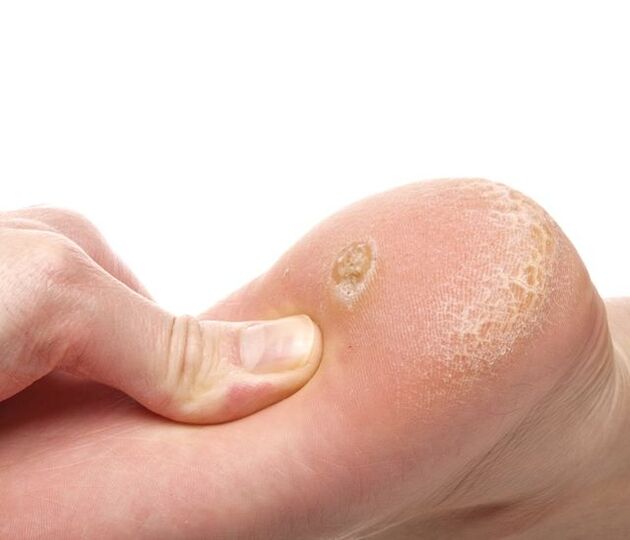
A wart on the heel is a tumor that can cause great discomfort to patients. The growth is formed under the influence of the papillomavirus and also mainly affects damaged skin on the heel. It looks like an elastic and dense formation of the epidermis, covered with dry crusts.
Causes of warts on the heel
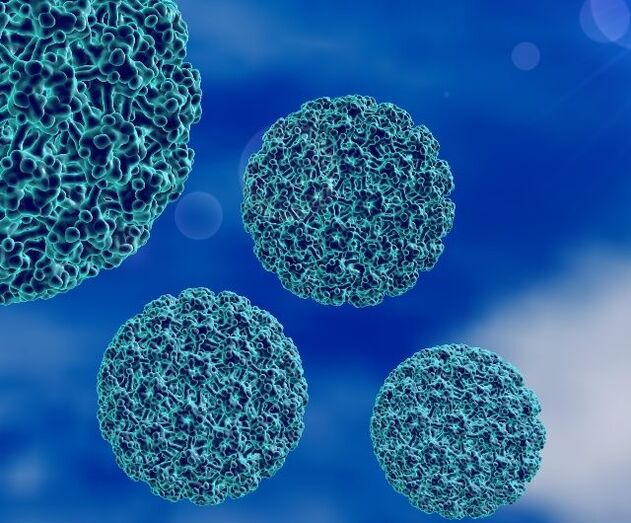
Papillomavirus is capable of infecting various parts of the human body and causing proliferation of epithelial tissue. Heels are no exception. Warts are usually formed here caused by HPV types 1, 2, 4, 27 and 57. There are at least 100 strains of these germs in the world. It is highly contagious and widespread, and therefore around 80% of the world's population are carriers of this virus.
Of all benign growths that can be located on the heel, warts account for 1/3. It is quite easy to get infected with HPV, which causes their appearance - the virus is transmitted from a sick person to a healthy person due to normal daily interactions in everyday life, as well as in crowded places. Using other people's personal hygiene products, walking barefoot on the floor in crowded rooms (gyms, locker rooms, saunas, swimming pools) are all ways to spread the papilloma virus.
Contrary to popular belief, it is almost impossible to contract HPV and "earn" a heel wart at the beach. This germ dies quickly when dried and exposed to sunlight.
Wart formation on the heel does not always occur immediately after infection with papillomavirus. People with strong immunity are usually not prone to the formation of warts and papillomas. The body's defense system suppresses the pathogen and does not cause health damage. But as soon as the immune system fails, which happens with overwork, hypothermia, infectious diseases, hormonal imbalance, poor nutrition, poisoning, HPV can become active and manifest as skin tumors.
In addition, there are several factors that accompany the appearance of warts on the heel:
- Trauma to the epidermis of the heel - cracks, abrasions, scratches, cuts;
- Wearing ill-fitting shoes that pinch, crush or rub the skin;
- Diseases that cause trophic changes in soft tissue - varicose veins, diabetes, atherosclerosis;
- Degenerative diseases of the lower limbs - flat feet, arthritis, osteoarthritis and others;
- Excessive sweating or excessive dryness and sensitivity in the epidermis of the feet.
As a rule, if the virus is not too active and the immune system provides resistance, warts on the heel can appear in singular. If the germ is very active, massive damage to the heels and feet is possible from the warts.
Methods for detecting warts on the heel

Due to the constant pressure on the foot and heel, warts in this area often become very similar to the epidermis. Therefore, they are not so easy to identify. An exceptional dermatologist is able to establish an accurate diagnosis and differentiate the growth from other pathologies. To do this, an operation called a dermoscopy is usually performed.
To perform a qualitative study, the stratum corneum of the epidermis is scraped and a sample is taken. The resulting scraping is sent to a laboratory. There they confirm or deny the presence of HPV.
Visual inspection can also help to put together a certain picture of the disease. With a wart on the heel, there is no skin pattern on its surface. In addition, you can see elephant money. These are traces of blocked capillaries.
If necessary, ultrasound is prescribed, which helps to determine the depth of penetration of the so-called "root" of the wart deep into the skin.
Differential diagnosis of tumors on the heel is necessary in the following cases:
- Presence of cancerous lesions in the patient;
- Leg damage from various causes;
- Reiter's syndrome, which can cause the development of keratoderma;
- Syphilis, which can cause painful round growths on the feet and hands.
To clarify the diagnosis, a blood test for HPV, syphilis and a general diagnosis is also performed.
Why is it important to treat warts on the heel?
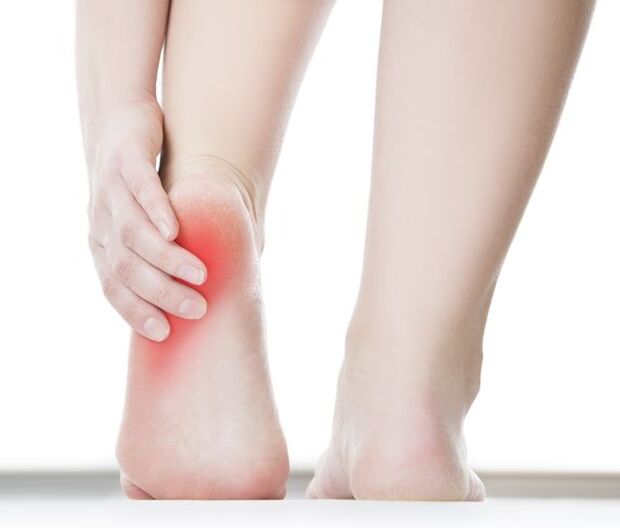
Although warts on the heel are considered a fairly harmless pathology, consultation with a doctor and treatment should not be delayed. Over time, the disease may worsen. In addition, self-treatment at home can only suppress the external symptoms of papillomavirus infection. At the same time, the virus will remain in the blood and cause warts to recur regularly on the body.
It is also worth remembering that a neglected wart on the heel develops and its growth continues. Moreover, based on the external pressure on the leg, the tumor grows inside the skin and affects the soft tissue deeper and deeper. This causes compression of the layers of the epidermis and the formation of blood clots in the capillaries, which manifests itself in the form of dark dots on the surface of the growth. Gradually, the wart on the heel begins to cause severe pain.
Treatment of a wart on the heel is necessary for the following symptoms:
- Severe pain in the growth area;
- Rapid growth of warts and damage to new areas of the heel;
- Discomfort when walking and supporting the leg.
It should also be borne in mind that a patient infected with HPV poses a threat to others as he is a carrier of the virus. The relatives of such a person are at risk of being infected at home.
Only comprehensive treatment can help to completely get rid of pathological tumors and suppress the virus, as well as avoid relapses.
Ways to treat warts on the heel
Only a combined treatment will help those who do not know how to get rid of a wart on the heel. This is an opportunity not only to eliminate the tumor and the discomfort associated with it, but also to live a full life without endangering others. Warts are treated with special medications, device removal procedures, and sometimes traditional medicine can be resorted to.
Medicines for the treatment of warts on the heel
There are a wide variety of medications available to treat heel warts. They are divided into different groups according to their composition and the characteristics of their effect on the tumor and the virus that caused the disease.
Let's look at the main groups of funds:
- Acidic substances. These drugs are available in pharmacies without a prescription and are usually inexpensive. They have a pronounced cauterizing effect. Salicylic acid gives good results. To remove warts on the heel, a solution with a concentration of 10-60% is required. The product should be used once a day until the tumor is completely destroyed. This material is not suitable for patients with diabetes and cancer. The analogue of salicylic acid is trichloroacetic acid.
- Alkaline products. These substances have about the same effect on diseased tissue as the previous ones. They also cauterize the wart and cause diseased areas of the skin to die. The most popular drug from this group causes tissue necrosis, so it must be used as directed and with caution in relation to adjacent healthy tissue.
- Freeze medicine. Until recently, heel warts were only frozen in hospitals using liquid nitrogen. Now this procedure can be performed at home using special medicinal preparations. A mixture of dimethyl alcohol and propane has worked well. The refrigerant is liquid nitrogen. The product helps to remove warts on the heel and has a harmful effect on the papilloma virus. The use of this drug also requires special care so as not to cause damage to healthy tissue.
- Antiviral cream, gel, ointment. These remedies are effective because they act directly on the cause of warts - HPV. Although in most cases longer exposure to the tumor is required than in the case of aggressive cauterizing agents. One of the most effective drugs in this group is an ointment based on extracts from potato shoots. It has a herbal composition and helps stimulate the production of interferon in the body, interrupting the recovery process of viruses and causing their quick death.
- Immunosuppressive extrinsic substances. They are quite effective when it comes to single small warts on the heels. They help to stimulate the local immune response and the body independently suppresses the virus. An interferon-based ointment is popular. Long-term use is necessary - for at least 4 weeks until a noticeable therapeutic effect appears.
- Tablet antiviral and immunosuppressive drugs. If the concentration of HPV in the blood is high, the doctor may prescribe immunosuppressive or antiviral treatment with oral tablets. This will suppress the pathogen from within and avoid the risk of relapse. This is especially important in immunodeficiencies.
If local cauterizing drugs can be used independently to treat warts on the heel, according to the instructions, then only the doctor should prescribe oral drugs based on these tests.
Instrumental methods to remove warts on heels
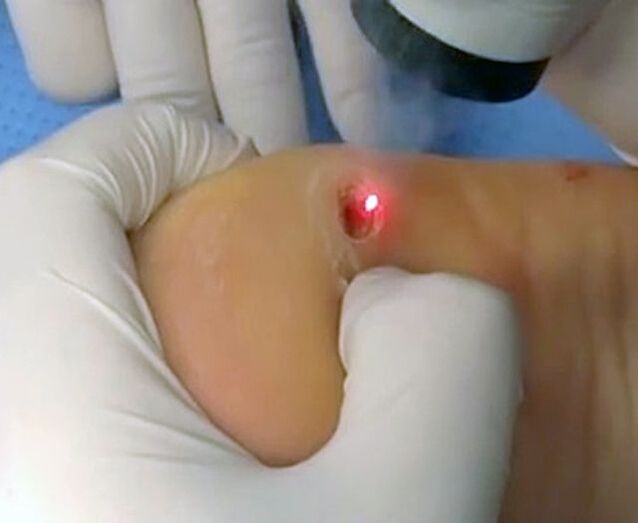
Today, there are several effective ways to remove a wart on the heel using various devices. Modern clinics can offer a number of highly effective instrumental techniques at varying costs:
- Electrocoagulation. Warts that have developed over a long period of time are usually rooted deep in the skin. Electrocoagulation does not involve deep penetration of soft tissue. Therefore, this method is only used to treat small surface formations. Also, electrocoagulation often leaves a scar.
- Cryoablation. One of the most popular methods of removing warts on the heel is to use liquid nitrogen. In addition, this is a fairly inexpensive method of influence. Scars are rarely left after treatment. But the effectiveness of the method depends on the skill of the doctor, as it is necessary to determine the exact depth of the root growth before removing the wart on the heel. Otherwise, the tumor may recur. The operation is fast, as is the period of tissue regeneration.
- Laser removal. One of the modern, minimally invasive methods of treating pathological skin growth. Allows you to achieve a good cosmetic effect. The penetration of the laser beam can be adjusted easily, unlike liquid nitrogen. The procedure is short and almost painless. The wound on the heel also heals quickly and without complications. Relapses after laser treatment of warts on the heel are almost impossible.
- Radio wave removal. In this case, the warts are cut out with a special radio knife. At the same time, blood vessels are cast to avoid the spread of the virus to healthy tissue and bleeding. After such an operation, there is also a short recovery time and almost no scars.
- Surgery. This method is considered outdated, but is used in many cases. For example, when the growth is very large and further histological examination of the removed tissue is required. The procedure is quite painful, is performed under local anesthesia, and the recovery period can last several weeks. Bleeding and swelling are also possible. Scars often form. A relative advantage of this method of treating warts on the heel is the low cost.
The choice of how to treat a wart on the heel rests with the patient and the treating physician. Most often, the gentlest and minimally invasive methods are chosen - lasers and radio waves remove growths.
Folk remedies for warts on the heels
If you have a wart on your heel and don't know what to do, you can try treating it with some home remedies. For example, acetic acid, celandine juice, garlic juice, etc. s. etc. popular among "traditional healers. These remedies are less effective than pharmaceutical drugs or instrumental methods. However, they can also have positive effects with regular use. The main condition is not to interrupt treatment until the growth disappears completely.
Also, real help in the treatment of warts on the heel can be provided by the immunosuppressive effect on the body using folk methods. To do this, take decoctions of the following plants: rose hips, coltsfoot, sea buckthorn, mint, chamomile, lemon balm, blackcurrant and raspberry leaves, calendula. These plants will help to increase immunity, especially in cold weather, when there is not enough fresh fruits and vegetables. It is also useful to consume freshly squeezed juice and various fruit drinks and compotes.
Prevention of warts on the heel
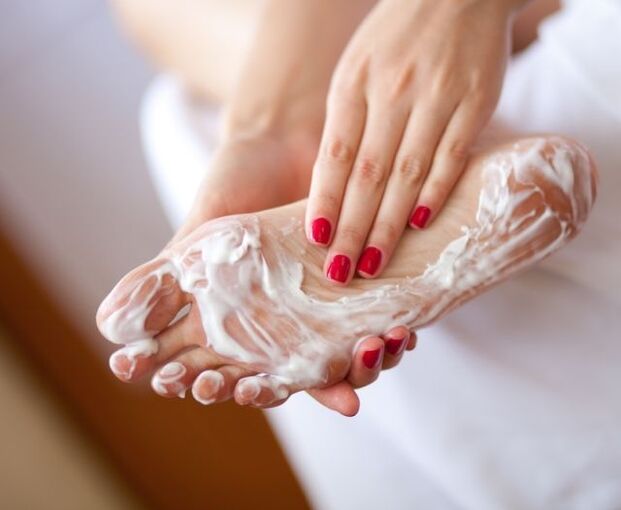
Preventing human papillomavirus infection is the most effective way to fight it. So follow the rules of personal hygiene, try not to use other people's things and always use interchangeable shoes in public places.
If you have already been infected with HPV and have warts on your heels, start treating them right away. After eliminating the growth, carefully monitor the condition of the feet.
If you sweat, only wear shoes made of natural materials that are comfortable and breathable. If your feet are deformed, use orthopedic shoes to remove excess stress from your feet.
Do not forget about hygienic pedicure, use a moisturizing cream if the skin on your heels is dry. Avoid developing cracked heels. Simple rules of prevention can prevent the recurrence of tumors.
Warts on the heels are potentially harmless growths, but they can cause considerable discomfort to the patient, as they press on the tissue and cause pain as they grow. In addition, we must not forget that these are viral formations and therefore humans are the source of infection. Therefore, the treatment of warts on the heels must be done under the supervision of a doctor.














































































